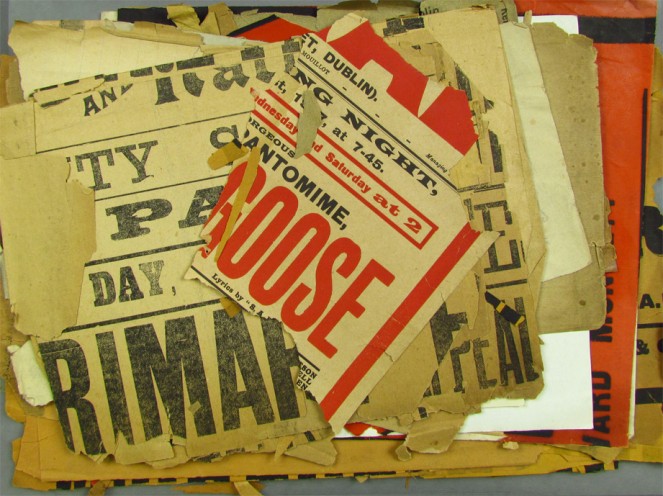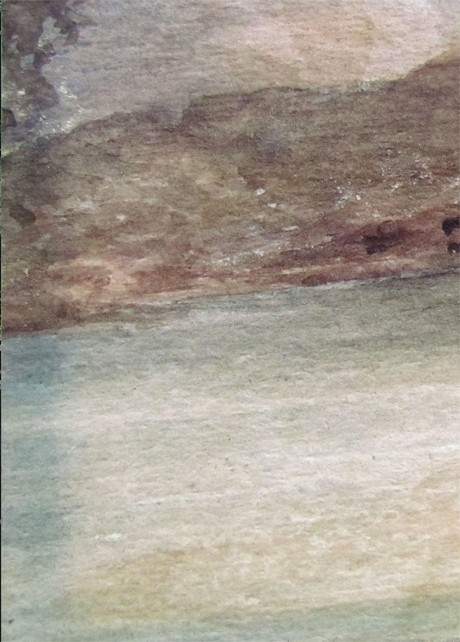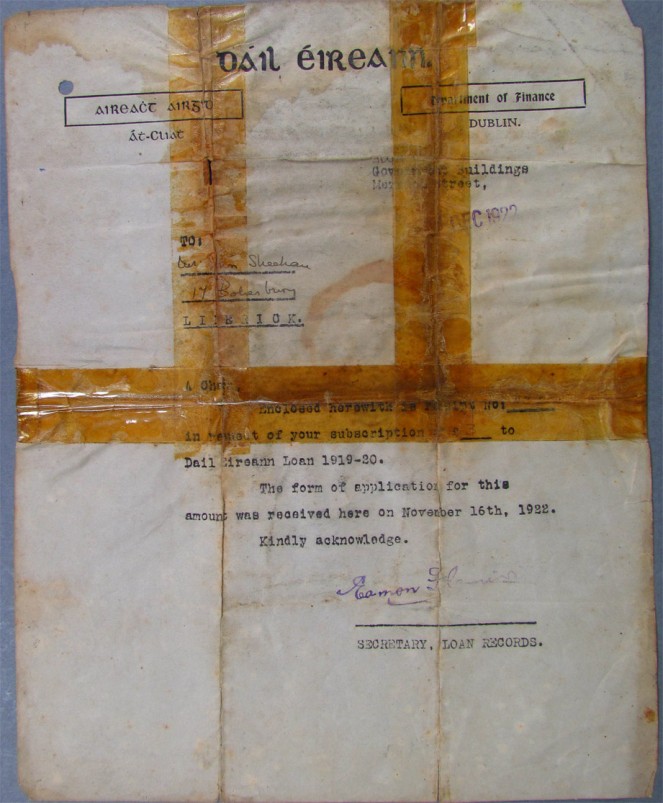by Louise O'Connor, Conservation
For most of us, paper is an everyday, throw-away thing. We may hang on to concert tickets, or precious letters, some old photographs or important family certificates. But what if you had to keep those things for ever and ever? Maybe you’re the family historian or an avid comic collector - then paper is a problem, as it’s not really built to last very long, and it’s all got to do with acid.
Paper is made from cellulose. Until the late 19th century, this was sourced from linen or cotton rags. With the industrial revolution came new methods of making paper from woodpulp, which proved a very cheap solution for everyday short-life items like newspapers, magazines or writing paper. However, woodpulp cannot make strong paper as its fibres are not long like cotton or linen, and it contains lignin. To make paper strong enough for a short lifetime of a few days' use, various chemicals are added to the pulp. These chemicals degrade very quickly, turning acidic (something is acidic if it has a pH of less than 7) and breaking the cellulose fibres. The paper then yellows and releases a distinctive smell, like that from old paperbacks. This ‘brittle paper’ is a huge problem in libraries across the world, and of course here at the National Library too.

When we say brittle paper, we really mean brittle!
But it’s woodpulp paper that many of us have in our family or hobby archives, so how do we protect and preserve our family papers? Here’s some tips...
- Hands off!
- Lights out!
- Avoid sticky situations
- Box it
- Absolutely no pongy plastics
- Fitting in counts!
- Location Location Location
Hands off!
Keeping your family collections absolutely pristine would mean having to lock them away in cold dark storage for ever! But that hardly makes much sense if you want to enjoy your collection… However, it’s important to limit handling, as this causes damage in two ways. Firstly, the natural oils on our skins can be transferred onto paper surfaces. These oils are absorbed into the porous paper and slowly turn acidic. A well-thumbed book will often have dark fragile edges, whilst fingerprints are especially problematic for some types of old photographs. There is a huge debate in the library world on whether to wear gloves when using library collections. While gloves can prevent oil transfer, they also dull your sense of touch, which you need when handling delicate things. Clean hands are the best compromise, and remember rough handling will lead to creases and tears, which only get worse with even more handling.

Light damage to a watercolour
Lights out!
Light will permanently damage any colours and will cause the paper to age more quickly, turning it yellow and yep - more acidic! In this stark example, the edge of the drawing was protected from the light, but the centre has been changed as light damage has caused the blue pigment to fade.
Avoid framing your most treasured documents and putting them on display forever. The best thing is to take a photograph and put this on display or use it as a reading copy...
Avoid Sticky Situations
If you have something that is torn – DON’T repair it yourself ... and NEVER use Sellotape – or any other tape! The tape may ‘fix’ your documents for now– but it’s BAD in the long-term! If you want your object to last forever the repair needs to last forever too. Everyday stationery supply tapes (and glues) can vary a lot but in most cases, it’s the glue that’s the problem. It’s often a rubber that degrades very quickly. As a thermoplastic polymer it ages and goes through three stages – from gooey > to yellow > to crispy. The glue often ends up looking like toffee, hiding the text underneath and becoming seriously stuck to the porous fibres in the paper.

Gooey (technical term) tape residue
It is acidic (acids+paper = bad if you haven't guessed already) and will turn the paper see-through and will eventually crack and breakaway. It’s also best to avoid document tapes and glues that are sold as ‘archival’, as previous form has shown us that this isn’t always the case! If it needs repairing, always consult a conservator and keep the tape for your Xmas wrapping!

See what we mean!
BOX it!
It may seem simple or even pretty boring, but putting your precious family archives in boxes will help their preservation! At the very least a box will guard against dust collecting on your paper, eventually sticking to paper fibres with weak chemical bonds. But not any old cardboard will do – ideally your box needs to be acid-free, lignin-free and with an alkaline buffer for ‘permanent’ storage. Normal cardboard boxes will be made from woodpulp paper that will turn acidic very quickly, creating an acidic ‘micro-climate’. Your paper collection will absorb the acids, speeding up its degradation. It can be tricky to source specialist boxes, but one way around this is choosing archival folders and sleeves as a barrier. Normal stationery supplies are not suitable for long-term storage. If you can’t get your hands on archival card folders, then use non-bleached, acid-free, lignin-free artists' card to make your own folders.
Absolutely no Pongy Plastics
Plastics sleeves are great for storing single sheets of paper. But there is good plastic and there is bad plastic. Most commercial stationery plastic sleeves are made from non archival ‘bad’ plastics. Bad plastics such as PVC (think budget plastic raincoats) degrade very quickly - within 30 years! PVC and other bad plastics contain other chemicals called plasticisers, that will also decrease the preservation of your papers. As the plasticisers degrade, they cause the plastic to become sticky and yellow and to pong!
Non-woven polyester (traded as Mylar and Melinex) is a see-through ‘good’ plastic and will not degrade. It is used for storing some printed papers, as the static will keep tears in place, and the polyester will prevent acids transferring from one paper to another by providing a barrier. However it’s not a one-stop-shop for all of your needs - don’t use it to house fragile photographs, prints or drawings!
Fitting in counts!
If your box is too big, then the documents and prints will slouch and crease; if it's too small, they will be cramped and the pressure can lead to sticking. If you store things in smaller boxes or folders with the edges sticking out then they'll quickly get tattered, torn and will fall apart. So if you have lots of paper, organise it all by size. Unfold sheets if you can. Don’t use paperclips or staples to keep items together, as they rust and eat into the paper. It's also best to remove Post-its, rubber bands, twine, paper clips and any staples you find from the paper if you can. Next – it's time to divide, folder up and label everything – yep, may not be exciting – but will protect fragile items and make it much easier to find things later.

Rust from metal paper clips on the left, and from metal staples on the right...
Location Location Location
Now that you’ve "housed" everything, you need to find your collection a permanent home. Paper is extremely sensitive to ambient temperature and relative humidity and so it needs a location that’s consistently cool, dry and away from direct sunlight or heat sources (like a radiator or a chimney breast). Water can seriously damage paper collections, and damp places can cause mould to break out ... in all colours of the rainbow! Sometimes mould isn't visible, but you'll get a distinctive smell (like a damp cloth) and the paper will have a gritty powdery feel. So don’t put your precious things in the shed, attic or cellar. They're your family's heritage!

A book with mould damage
For more advice, explore some of these links below, or leave me a comment!
- Dealing with anything from books to photographs to watercolours
- Caring for your Family Archives
- Preserving paper documents and artwork
- This is excellent on the science bit - Brittle Books, Bad Paper!
